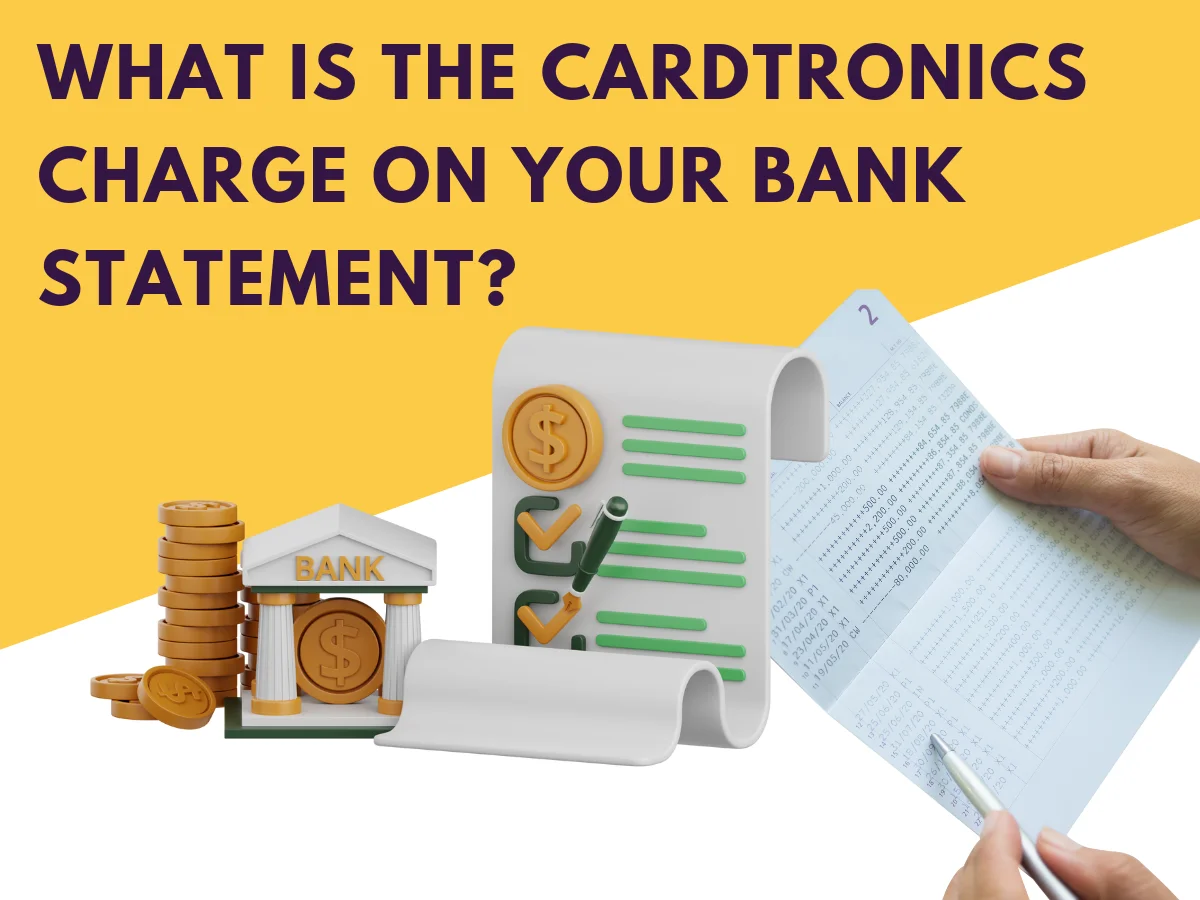In the labyrinth of your monthly bank statement, the enigmatic presence of “Cardtronics” charges may pique your interest and raise a plethora of questions. In this detailed exploration, we will unravel the complexities surrounding the Cardtronics charge, addressing not only its definition but also diving into the nuanced details of its appearance on your bank statement and how to shield yourself from potential unauthorized charges.
Also read BillMatrix Charge on Bank Statement.
What is Cardtronics?
Cardtronics, though no longer an independent company, used to be the world’s largest owner and operator of ATMs. They provided financial services technology by:
- Owning and managing a vast network of ATMs: Over 200,000 worldwide, including the Allpoint brand known for offering surcharge-free withdrawals.
- Partnering with retailers: Placing ATMs in convenience stores, supermarkets, and other locations to offer cash access to customers.
- Providing additional services: Beyond withdrawals, ATMs could handle deposits, cash checks, money transfers, and bill payments.
In January 2021, NCR Corporation acquired Cardtronics, integrating their ATM network and technology into their broader financial services solutions.
So, while Cardtronics itself no longer exists as a separate entity, its legacy lives on in the extensive ATM network and technology now managed by NCR.
What Is the Cardtronics Charge?
The Cardtronics charge serves as a flag indicating transactions affiliated with ATMs operating within the expansive Cardtronics network. To truly comprehend this charge, it’s essential to acknowledge the diverse forms it can assume on your bank statement. These may include variations such as CARDTRONICS CCSE, CARDTRONICS ATM, CARDTRONICS, Point of Sale withdrawal – CARDTRONICS, Debit card purchase – CARDTRONICS, and ATM withdrawal fee – CARDTRONICS.
Cardtronics ATM Fee
Delving deeper into the realm of Cardtronics charges, it’s crucial to grasp the associated fees, particularly those linked to ATM transactions. Whether you’re engaged in a standard ATM withdrawal or a point-of-sale transaction, having a clear understanding of potential charges ensures transparency and financial awareness.
Appearance on Your Bank Statement
Cardtronics charges are not one-size-fits-all; their appearance can vary significantly on your bank statement. Recognizing these nuances, such as the distinctive entries like CARDTRONICS CCSE or Point of Sale withdrawal – CARDTRONICS, becomes instrumental in distinguishing legitimate transactions within the Cardtronics network.

Examples of Cardtronics Charge Entries:
- CARDTRONICS CCSE:
This particular entry may indicate a Cardtronics Cash Convenience transaction, signaling a direct connection to the Cardtronics network.
- CARDTRONICS ATM:
The straightforward “CARDTRONICS ATM” entry suggests a standard ATM withdrawal facilitated by the Cardtronics network.
- CARDTRONICS:
A generic “CARDTRONICS” entry could encompass various transactions within the Cardtronics ecosystem, requiring closer scrutiny for specific details.
- Point of Sale withdrawal – CARDTRONICS:
This entry signifies a Cardtronics-affiliated point-of-sale transaction, offering a broader spectrum of financial services beyond traditional ATM withdrawals.
- Debit card purchase – CARDTRONICS:
Here, the Cardtronics charge is associated with a debit card purchase, emphasizing the diverse financial activities integrated into the Cardtronics network.
- ATM withdrawal fee – CARDTRONICS:
This entry highlights the presence of an additional fee incurred during an ATM withdrawal, providing insight into potential charges beyond the primary transaction.
Strategies to Safeguard Against Unauthorized Cardtronics Charges
In the ever-evolving landscape of financial transactions, protecting your assets from unauthorized charges is imperative. Here are five proactive strategies to fortify the security of your financial dealings:
1. Regularly Monitor Your Statements
Your first line of defense against irregular or unauthorized transactions is regular scrutiny of your bank statements. Dedicate specific time intervals to meticulously review each statement, ensuring that any discrepancies are promptly identified and addressed.
2. Harness Technology with Transaction Alerts
Empower yourself with technology by enabling transaction alerts. These real-time notifications act as a vigilant watchdog, instantly notifying you of any activity on your account. This rapid awareness allows for prompt action in case of suspicious transactions, minimizing potential damage to your financial well-being.
3. Ensure the Physical Security of Your Cards
Recognizing that physical security is as crucial as digital security, take measures to safeguard your physical cards and PINs. By minimizing the risk of unauthorized use in the event of loss or theft, you add an essential layer of protection to your financial assets.
4. Exercise Caution with ATM Usage
Choose ATMs wisely to enhance your financial security. Opt for machines located in well-lit, high-traffic areas to reduce the likelihood of encountering skimming devices or falling victim to other fraudulent activities during your transactions.
5. Establish Transaction Limits
Adding an extra layer of protection, establish transaction limits on your accounts. In the unfortunate event of unauthorized access, this measure significantly limits potential financial losses, providing a safeguard against excessive or fraudulent transactions.
6. Implement Two-Factor Authentication
Enhance your account security by activating two-factor authentication wherever possible. This additional layer requires verification beyond passwords, substantially reducing the risk of unauthorized access. Embrace this advanced security measure to bolster the overall protection of your banking accounts.
7. Promptly Contact Your Bank
Should you detect any suspicious Cardtronics charges or other irregularities, don’t hesitate to contact your bank immediately. Prompt reporting of such incidents enables swift investigation and resolution, ensuring that any potential security breaches are addressed with efficiency and precision. Stay proactive and vigilant to safeguard your financial well-being.
Conclusion
In the intricate tapestry of modern banking, understanding the Cardtronics charge is a pivotal step toward maintaining financial awareness and security. By deciphering the various forms it can take and implementing proactive measures, you empower yourself to navigate transactions confidently while fortifying your finances against potential unauthorized activities. In an era where financial vigilance is key, knowledge is your strongest ally. Stay vigilant, stay secure.
FAQ
Do ATM withdrawals show up on statements?
Yes, ATM withdrawals are typically displayed on your bank statements. These entries will detail the amount withdrawn, and the date, and may also include information about the ATM location or the associated network, such as Cardtronics.
Can you deposit money at a Cardtronics ATM?
No, Cardtronics ATMs generally do not support cash deposits. They are primarily designed for cash withdrawals and balance inquiries. For deposits, you would typically need to use your bank’s branch or designated deposit ATMs.
Can ATM show transaction history?
No, ATMs typically do not provide transaction history. They are designed for immediate transactions like withdrawals and balance inquiries. For a detailed transaction history, you would need to check your bank statement through online banking or at a branch.
